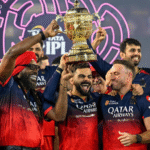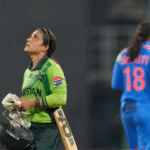Imagine empty stands for a red-ball international, and yet tens of thousands fill the stadium for a “junior” ODI clash. It sounds paradoxical, but that’s exactly the strange contrast unfolding in Indian cricket: a Test match struggles for crowd presence, while India A vs Australia A draws a whopping 24,000 spectators in Nagpur.
This juxtaposition is not just a fleeting oddity — it signals shifting dynamics in how fans relate to cricket formats, how boards package the spectacle, and how “emotion” often trumps tradition.
The Numbers Say Enough
Nagpur’s Vidarbha Cricket Association Stadium (capacity ~45,000) Wikipedia was vibrant for the India A vs Australia A ODI. Reports suggest 24,000 fans turned up — not for a full-fledged “senior” India vs Australia clash, but for the A-team version. That’s over half the ground filled, even though the match lacks the glamour, star names, and stakes typically associated with full internationals.
Yet, conversely, some Test matches in India lately have suffered from sparse attendance — even in marquee venues — with fans questioning whether the purest form of cricket is losing its appeal in this age of instant gratification, T20 glitz, and broadcast convenience.
Why the Disparity?
Test cricket demands patience: five days of careful play, subtle shifts, wear and tear on pitches, and slow narrative arcs. For many casual or newer fans, that’s a tall ask. An ODI — even between A-teams — promises more immediacy: boundaries, faster innings, a result in one session (or day). The shorter format aligns better with today’s entertainment expectations.
Star Power vs. Accessibility
In some Test matches recently, many marquee names are rested or absent. Without big draws (current stars, rivalries, media hype), fans may feel less compelled to show up. In contrast, an A-team ODI in a city like Nagpur gets marketed as “local opportunity” — fans get a chance to see up-and-coming talent live, often for less cost. The notion of spotting the “next big star” in person carries its own excitement.
Scheduling, Ticketing and Hype
ODIs often have more aggressive marketing, fan engagement events, promotions, and manageable match durations for families. Test matches, especially day matches, require more commitment — both in time and in planning. If a Test’s pricing, commute, or day times are not fan-friendly, many potential spectators may just skip it.
Now, most fans can catch Test matches at home with ease. The marginal benefit of being physically present is lower. But for flagship shorter matches, people may prefer the in-person energy. The live experience of a fast chase, crowd chants, and immediate action is more palpable.
In Nagpur, local pride in hosting a competitive international match — even if A-teams — can galvanize interest. The “it’s in my city” effect plays strongly. For Test matches, which sometimes rotate cities or host fewer matches, that local connect might be weaker.


